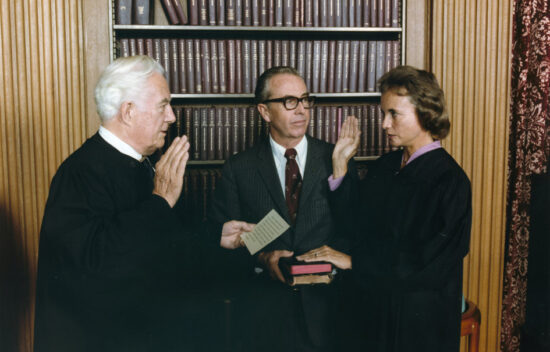
American Civic Virtues
Guiding Questions:
- What civic virtues do Americans value?
- How does the practice of civic virtues promote a healthy civil society?
Objectives:
- Students will understand the meaning of civic virtue.
- Students will examine how the practice of civic virtues helps promote a healthy civil society where individuals and communities can thrive together.
- Students will explore examples of individuals in history who demonstrated civic virtues.
Student Materials:
- Civic Virtues Today
- American Portraits in Civic Virtue
- American Portraits in Civic Virtue Graphic Organizer
Teacher Resources:
Facilitation Notes: Students will consult Appendix A: Founding Principles and Civic Virtues Organizer and Appendix B: Being an American Unit Graphic Organizer from the first lesson in this curriculum.
Anticipate
Have students find an example from the news or their local school or community of Americans practicing a Civic Virtue by helping their communities. Examples may include responses to a natural disaster, service to the community, heroic acts of physical or moral courage, or demonstrations of responsibility or leadership. Tell students to consult Appendix A: Founding Principles and Civic Virtues Organizer for reference.
Engage
Have students share some examples of the Civic Virtues they identified for homework. Discuss the examples as a group.
Explore
- Distribute American Portraits in Civic Virtue. Read the quote aloud with students and discuss the first two questions.
- Guide students to the fact that the Founders believed that a self-governing people would need to practice civic virtues for a republican government and society to endure. Civic virtues bound free individuals into a community united by the spirit of a common purpose and an interest in the common good.
- Ask students how the examples of Civic Virtue that they shared helped unite the community or promoted the common good.
- Distribute American Portraits in Civic Virtue Graphic Organizer. Review the directions with students. Have students analyze the historical scenarios of individuals who exhibited Civic Virtues and complete the organizer individually, in pairs, in small groups, or as a jigsaw, as best fits your classroom. Students should refer to Appendix A: Founding Principles and Civic Virtues Organizer to decide which Civic Virtue(s) fit each scenario and why.
- Debrief: Discuss some of the scenarios and ask students why they selected a certain Civic Virtue to apply. See if other students arrived at a different conclusion and applied another Civic Virtue.
Assess & Reflect
Have students return to Appendix B: Being an American Unit Graphic Organizer from the first lesson in this curriculum and complete the applicable row as an exit ticket.
Extend
Have students go to the American Portraits curriculum on the Bill of Rights Institute website and:
- Read more of the narratives on one of the individuals in their organizer. How does this information affect their understanding or appreciation of their example of virtue?
- Choose another individual to learn about and add to their organizer. Note that stories are organized by virtue.
- Have students write a brief story about an individual, past or present, who they believe demonstrates one of the Civic Virtues. This can be any famous historical figure, a family member, or a member of the community. Have students share their stories with the class.
Student Handouts
Next Lesson






